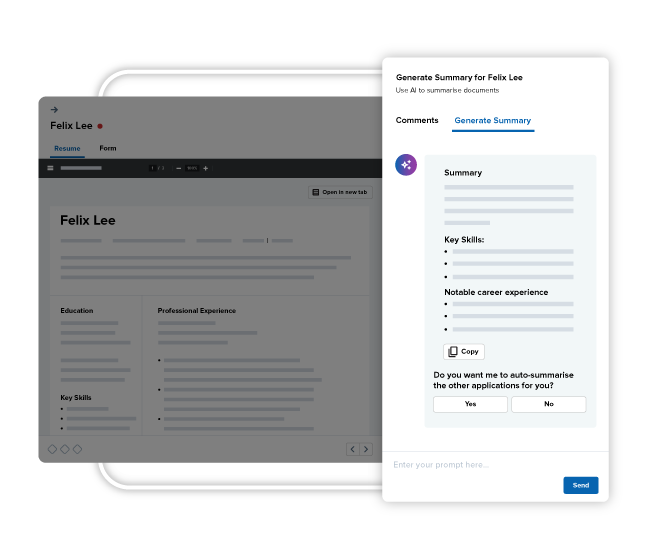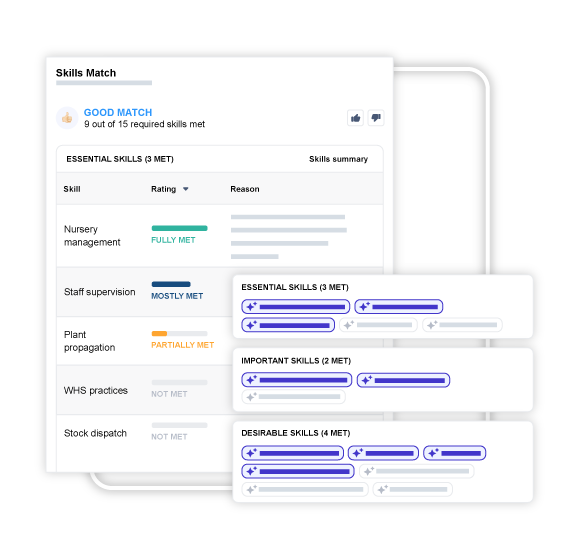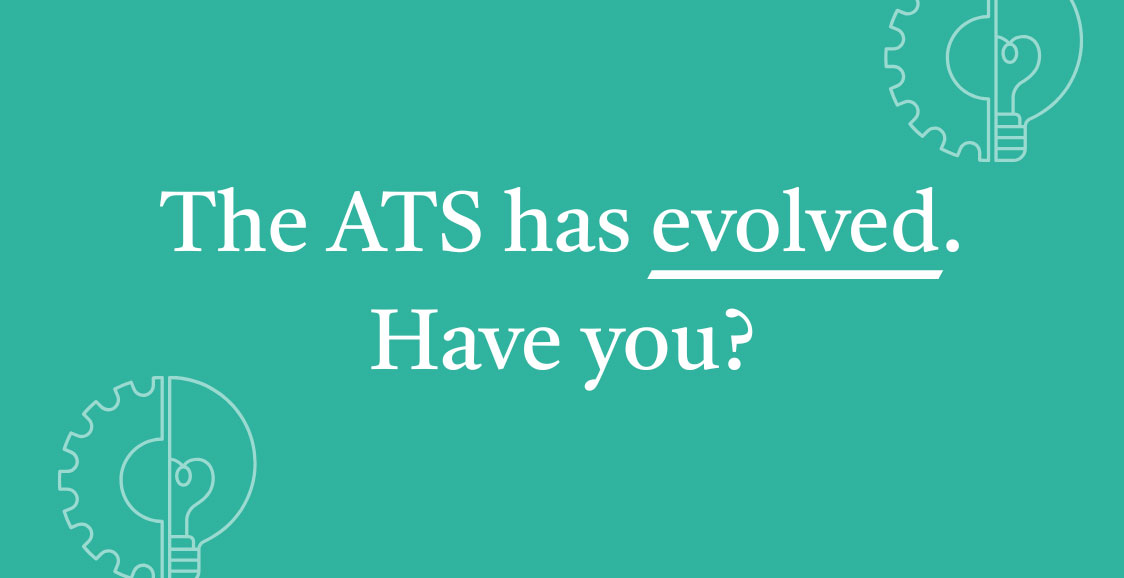The applicant tracking system (ATS) has long been the foundation of talent acquisition. For years, it reliably handled the essentials – posting jobs, tracking applicants, and maintaining compliance. Far from being “dead,” the ATS is now more powerful than ever.
Modern platforms are evolving into intelligent, proactive talent engines, offering features like AI-driven candidate matching, skills-based insights, and integrated recruitment marketing. What was once a system for managing workflows is now a strategic partner helping organisationsorganizations hire more effectively and with greater impact.
According to Aptitude Research, 82% of companies see significant gaps in their ATS, and only 28% are fully satisfied. The reason? The old “tracking” model doesn’t match the speed, complexity, and intelligence modern talent acquisition teams demand.
Today’s ATS is no longer just a workflow tool; it has evolved into a comprehensive solution. The future is intelligent, proactive, and agentic. It’s transforming talent acquisition into a strategic engine for business growth.
1. Why the old ATS model is failing
Traditional ATS platforms were built to streamline the basics of hiring. They standardisedstandardized processes, ensured compliance, and provided a single place to manage applicants. This functionality gave talent acquisition teams structure and efficiency, and for many years, it was exactly what organisationsorganizations needed.
But as the talent market has become more complex, candidates expect personalisationpersonalization, hiring managers want to make faster decisions, and organisationsorganizations need to plan for future skills. Relying on a system designed purely for tracking is no longer enough. The foundation is solid, but it’s time to build on it.
2. Enter the intelligent ATS
The next-generation ATS is far more than a storage system, it’s a talent intelligence hub that actively helps recruiters hire smarter.
An intelligent ATS uses AI throughout the hiring process to eliminate the grunt work and streamline workflows. Generative AI has been adopted to support everyday tasks from fast-tracking job ad creation to crafting personalisedpersonalized candidate communications. Recruiters are now receiving intelligent recommendations, including suggestions for best-fit candidates for roles and guidance on the most effective sourcing channels for specific roles.
Teams are now turning towards skills-based matching that uncovers talent that might otherwise be overlooked. Instead of searching for job titles or exact keywords, it identifies transferable skills and potential, surfacing candidates from both active pipelines and applicants.
For example, PageUp’s Resume SummarisationSummarization tool automatically condenses long, complex resumes into short, easy-to-read insights, helping recruiters identify the most relevant experience at a glance. Combined with PageUp’s Skills Matching capabilities, recruiters can quickly compare candidate skills to role requirements, surface hidden talent, and make more objective, data-driven hiring decisions.


By shifting from passive tracking to active intelligence, the ATS evolves into a strategic partner, freeing recruiters to focus on building relationships and making data-driven decisions.
3. The emergence of AI agents and virtual assistants
The evolution of the ATS doesn’t stop at intelligence. The next frontier is AI agents, autonomous digital assistants that not only analyse data, but actively perform tasks in your recruiting workflows. Think of them as colleagues who never tire, can process vast amounts of information instantly, and handle repetitive work so teams can focus on what truly matters.
VerticalisedVerticalized AI agents, specialists designed for specific platforms and workflows like recruitment, are particularly effective. Paige, PageUp’s AI recruiting co-pilot, is a prime example. Paige solves the core challenges of software adoption and workflow complexity by providing step-by-step navigation and contextual tips that empower users to be effective from day one. By taking over repetitive and data-intensive tasks, Paige allows recruiters to focus on the high-value work that AI cannot replicate, like building relationships, assessing cultural fit, and guiding strategy.
This shift means the ATS is not just intelligent, it’s an active partner. AI agents in recruitment are becoming the silent engine behind sourcing, scheduling, and candidate management, taking over tasks that once consumed the majority of recruiters’ days.
4. Making the shift
Moving to an intelligent ATS isn’t just a technology upgrade, it’s a mindset shift. It’s about designing a recruitment ecosystem where people, processes, and platforms work together intelligently.
The good news is that organisationsorganizations don’t need to overhaul everything at once. By identifying quick wins like AI-assisted sourcing, automated candidate communications, or dashboards that highlight top candidates you can start realisingrealizing benefits immediately while laying the foundation for a fully intelligent, future-ready recruitment process.
Turn data into decision power
Does your ATS simply track activity, or does it provide real-time insights and actionable recommendations? Intelligence is no longer a nice-to-have, now it’s the foundation of modern talent acquisition.
Build for better experiences
Look for features that enhance both recruiter and candidate experience. Automation, resume summarisationsummarization, and skills matching speed up workflows while delivering candidates a more responsive and personalisedpersonalized journey.
Embed AI where it matters most
Map your current workflows to identify repetitive or time-consuming tasks that can be automated. Use AI to augment, not replace, your recruiters’ strengths. Form a cross-functional project team to oversee implementation, maintain compliance, and report on outcomes.
Equip your team to thrive with AI
Upskill recruiters to confidently use intelligent tools. Provide training on prompt design, data literacy, and the responsible use of AI. Pair enablement with clear ownership and performance metrics to ensure AI becomes a genuine driver of efficiency, not just another system to manage.
The bottom line
The ATS isn’t going away, it’s evolving. From a compliance and tracking tool, it has grown into a strategic talent intelligence system that helps organisationsorganizations engage candidates earlier, make informed decisions, and align talent acquisition with long-term business goals.
Companies that hesitate risk falling behind. Competitors leveraging intelligent ATS platforms and AI-driven workflows will move faster, surface better talent, and deliver a more engaging candidate experience.
The new playbook is clear: Stop tracking, start hiring intelligently, or risk being outpaced.
Ready to make the shift?
Discover how PageUp’s intelligent ATS and AI-powered assistant, Paige, can help streamline hiring, surface hidden talent, and empower recruiters to focus on what matters most – people. Request a demo to see intelligence in action.





